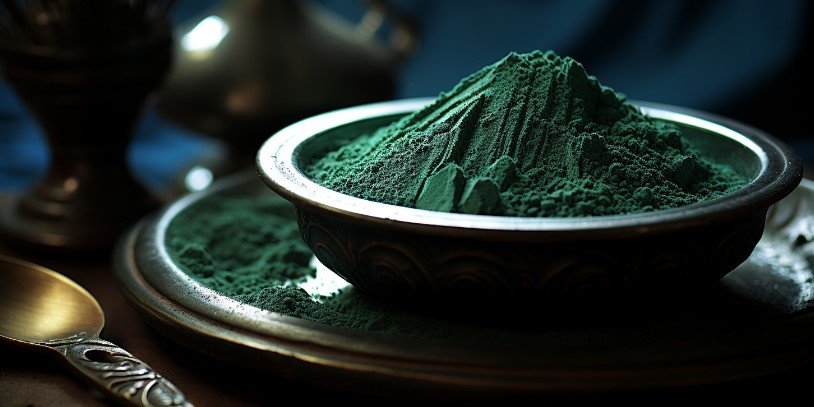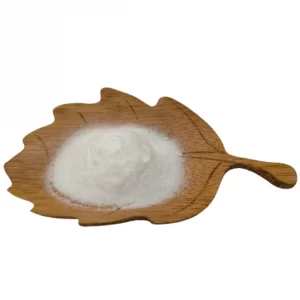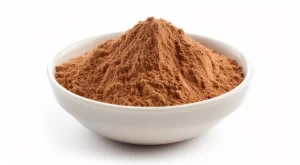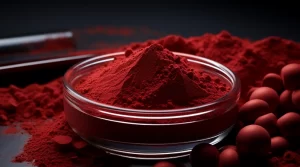스피룰리나는 폴리스티렌을 제거하는 천연 응고제 역할을 합니다.

As we all know, spirulina has always been regarded as a high-protein nutritional supplement, there is no shortage of various spirulina powder, spirulina tablets, spirulina capsules of various supplements, such as the manufacturer of bivitae. Today we follow andy to learn about the application of spirulina in a new area of research: optimization and modeling experiments of spirulina as a natural biological coagulant to remove polystyrene from water media.
스피룰리나 acts as a natural biological coagulant to remove polystyrene from aqueous solutions
Microplastics (MPs) are newly discovered pollutants that are caused by the decomposition of plastics and their release into the aquatic environment. The focus of the research in this paper is the removal of polystyrene (PS) from aqueous solutions using the natural biological coagulant Spirulina. The study looked at several key variables, including initial PS levels of 100 to 900 mg L-1, pH levels of 4 to 10, contact times of 20 to 40 min, and doses of 50 to 250 mg L-1 for Platinella grapes. Finally, the data analysis shows that the quadratic model fits the experimental results best.
The impact of plastic pollution on global crises
The paper begins by highlighting the serious impact of plastic pollution on the global crisis and the serious threat it poses to human health. It is also explained that plastics may decompose under certain environmental conditions to form tiny particles called Mps. The increase in plastics in our lives has caused a lot of concern in recent years, whether from the macro or onlookers level, MPs size is less than 5mm, exist in various forms in the environment, and these pollutants are discharged into the environment through various forms. It has to be admitted that the primary MPs is deliberately made. Once in the organism, these pollutants can cause endocrine disruption, which in turn affects activity, reproduction and growth and, in severe cases, increases the likelihood of cancer. Several studies have provided evidence that MPs are widespread in the world’s oceans. Among them, PS is a kind of Mps, a special microplastic containing styrene and benzene monomers, and both of these substances are considered carcinogens, causing great harm to aquatic organisms and humans.
Traditionally, microplastics have been removed by a variety of methods including chemical, physical and biological processes. However, compared with chemical reagents in water pollution treatment, natural coagulants have considerable advantages.
These are somewhat specific in: biodegradability, minimal toxicity, reduced residual sludge production and economic feasibility. In addition, natural coagulants are more sustainable and environmentally friendly. Natural coagulants are renewable resources and do not contain any harmful chemicals that may have long-term effects on the environment and health. In addition, the use of natural coagulants often reduces residual sludge and thus waste generation and disposal costs.
Overall, the use of natural coagulants can promote more sustainable methods of water treatment and contribute to a healthier environment. More recently, the use of biological methods, such as algae, has shown clear potential to solve the problem. Using biomagnification to remove pollutants minimizes the formation of toxic by-products, which ultimately leads to cleaner ecosystems. In addition, algae are rich in nutrients, minerals, rhamnoses, polyunsaturated fatty acids, omega-6, trace elements and easily digestible enzymes. After use, algae substances can also be used as fuel, fertilizer and medicine to prevent secondary pollution. Because of its rich nutrient content and ecological friendliness, as a natural coagulant, it facilitates the flocculation of Mps.
These findings show that S. platensis has a significanteffect on removing PS from the aquatic environment. Algae can serve as a convenient andeco-friendly method, replacing chemical coagulants, to effectively remove MPs from theaquatic environment.
The final experimental data show that the new natural biological coagulants can effectively remove PS from water, and confirm that microalgae provide a practical and environmentally friendly alternative to the effective removal of chemical coagulants.
References
Mohaddeseh Eydi Gabrabad, Mohammadreza Yari & Ziaeddin Bonyadi Scientific Reports volume 14, Article number: 2506 (2024) :Using 스피룰리나 플라텐시스 as a natural biocoagulant for polystyrene removal from aqueous medium: performance, optimization, and modeling.
Shen, M. et al. (Micro) plastic crisis: Un-ignorable contribution to global greenhouse gas emissions and climate change. J. Clean. Prod. 254, 120138 (2020).
Article CAS Google Scholar
Mai, L., Bao, L.-J., Shi, L., Liu, L.-Y. & Zeng, E. Y. Polycyclic aromatic hydrocarbons associated with microplastics in surface waters of Bohai and Huanghai Seas, China. Environ. Pollut. 241, 834–840 (2018).
Article CAS PubMed Google Scholar
Lusher, A., Hollman, P. & Mendoza-Hill, J. Microplastics in Fisheries and Aquaculture: Status of Knowledge on Their Occurrence and Implications for Aquatic Organisms and Food Safety (FAO, 2017).
Google Scholar
Barari, F. & Bonyadi, Z. Evaluation of the leaching of microplastics from discarded medical masks in aquatic environments: A case study of Mashhad city. Appl. Water Sci. 13(12), 229 (2023).
Article ADS CAS Google Scholar
Karbalaei, S., Hanachi, P., Walker, T. R. & Cole, M. Occurrence, sources, human health impacts and mitigation of microplastic pollution. Environ. Sci. Pollut. Res. 25, 36046–36063 (2018).
Article CAS Google Scholar
Anbumani, S. & Kakkar, P. Ecotoxicological effects of microplastics on biota: A review. Environ. Sci. Pollut. Res. 25, 14373–14396 (2018).
Article CAS Google Scholar
Duis, K. & Coors, A. Microplastics in the aquatic and terrestrial environment: Sources (with a specific focus on personal care products), fate and effects. Environ. Sci. Eur. 28(1), 1–25 (2016).
Article CAS Google Scholar
Sharma, S., Sharma, V. & Chatterjee, S. Microplastics in the Mediterranean Sea: Sources, pollution intensity, sea health, and regulatory policies. Front. Mar. Sci. 8, 634934 (2021).
Article Google Scholar
Bonyadi, Z., Maghsodian, Z., Zahmatkesh, M., Nasiriara, J. & Ramavandi, B. Investigation of microplastic pollution in Torghabeh River sediments, northeast of Iran. J. Contam. Hydrol. 250, 104064 (2022).
Article CAS PubMed Google Scholar
Enfrin, M. et al. Release of hazardous nanoplastic contaminants due to microplastics fragmentation under shear stress forces. J. Hazard. Mater. 384, 121393 (2020).
Article CAS PubMed Google Scholar
Yang, J. et al. Effects of soil environmental factors and UV aging on Cu2+ adsorption on microplastics. Environ. Sci. Pollut. Res. 26, 23027–23036 (2019).
Article CAS Google Scholar
Liu, Z. et al. Effects of microplastics on the innate immunity and intestinal microflora of juvenile Eriocheir Sinensis. Sci. Total Environ. 685, 836–846 (2019).
Article ADS CAS PubMed Google Scholar
Zahmatkesh Anbarani, M., Najafpoor, A., Barikbin, B. & Bonyadi, Z. Adsorption of tetracycline on polyvinyl chloride microplastics in aqueous environments. Sci. Rep. 13(1), 17989 (2023).
Article ADS CAS PubMed PubMed Central Google Scholar
Lithner, D., Nordensvan, I. & Dave, G. Comparative acute toxicity of leachates from plastic products made of polypropylene, polyethylene, PVC, acrylonitrile-butadiene-styrene, and epoxy to Daphnia magna. Environ. Sci. Pollut. Res. 19, 1763–1772 (2012).
Article CAS Google Scholar
Kedzierski, M. et al. Threat of plastic aging in marine environment. Adsorp. Desorp. Micropollut. Mar. Pollut. Bull. 127, 684–694 (2018).
Article CAS Google Scholar
Barnes, D. K., Galgani, F., Thompson, R. C. & Barlaz, M. Accumulation and fragmentation of plastic debris in global environments. Philos. Trans. R. Soc. B. 364(1526), 1985–1998 (2009).
Article CAS Google Scholar
Zhou, G. et al. Removal of polystyrene and polyethylene microplastics using PAC and FeCl3 coagulation: Performance and mechanism. Sci. Total Environ. 752, 141837 (2021).
Article ADS CAS PubMed Google Scholar
Marsh, K. & Bugusu, B. Food packaging—roles, materials, and environmental issues. J. Food Sci. 72(3), R39–R55 (2007).
Article CAS PubMed Google Scholar
Esmaeili Nasrabadi, A., Zahmatkesh Anbarani, M. & Bonyadi, Z. Investigating the efficiency of oak powder as a new natural coagulant for eliminating polystyrene microplastics from aqueous solutions. Sci. Rep. 13(1), 20402 (2023).
Article ADS PubMed PubMed Central Google Scholar
Enyoh, C. E. et al. An overview of physical, chemical and biological methods for removal of microplastics. In Microplastics Pollution in Aquatic Media: Occurrence, Detection, and Removal (eds Sillanpää, M. et al.) 273–289 (Singapore, 2022).
Chapter Google Scholar
Padervand, M., Lichtfouse, E., Robert, D. & Wang, C. Removal of microplastics from the environment. A review. Environ. Chem. Lett. 18(3), 807–828 (2020).
Article CAS Google Scholar
Cunha, C. et al. Microalgal-based biopolymer for nano- and microplastic removal: A possible biosolution for wastewater treatment. Environ. Pollut. 263, 114385 (2020).
Article CAS PubMed Google Scholar
Ang, W. L. & Mohammad, A. W. State of the art and sustainability of natural coagulants in water and wastewater treatment. J. Clean. Prod. 262, 121267 (2020).
Article Google Scholar
Freitas, T. et al. Optimization of coagulation-flocculation process for treatment of industrial textile wastewater using okra (A. esculentus) mucilage as natural coagulant. Ind. Crops Prod. 76, 538–544 (2015).
Article CAS Google Scholar
Mazloomi, S. et al. Removal of methylene blue by Saccharomyces cerevisiae: Process modeling and optimization. Desal. Water Treat. 236, 318–325 (2021).
Article CAS Google Scholar
Esmaili, Z. et al. Biosorption of metronidazole using 스피룰리나 플라텐시스 microalgae: Process modeling, kinetic, thermodynamic, and isotherm studies. Appl. Water Sci. 13(2), 63 (2023).
Article ADS CAS Google Scholar
Sadeghi, A. et al. The effect of diazinon on the removal of carmoisine by Saccharomyces cerevisiae. Desalin. Water Treat. 137, 273–278 (2019).
Article CAS Google Scholar
Nasrabadi, A. E., Ramavandi, B. & Bonyadi, Z. Recent progress in biodegradation of microplastics by Aspergillus sp. in aquatic environments. Colloid Interface Sci. Commun. 57, 100754 (2023).
Article CAS Google Scholar
Zahmatkesh Anbarani, M., Esmaeili Nasrabadi, A. & Bonyadi, Z. Use of Saccharomyces cerevisiae as a new technique to remove polystyrene from aqueous medium: Modeling, optimization, and performance. Appl. Water Sci. 13(8), 166 (2023).
Article ADS CAS Google Scholar
Rath, B. Microalgal bioremediation: Current practices and perspectives. J. Biochem. Technol. 3(3), 299–304 (2012).
Google Scholar
Grosshagauer, S., Kraemer, K. & Somoza, V. The true value of Spirulina. J. Agric. Food Chem. 68(14), 4109–4115 (2020).
Article CAS PubMed Google Scholar
Manzi, H. P., Abou-Shanab, R. A., Jeon, B.-H., Wang, J. & Salama, E.-S. Algae: A frontline photosynthetic organism in the microplastic catastrophe. Trends Plant Sci. 20, 20 (2022).
Google Scholar
Nasrabadi, A. E., Eydi, M. & Bonyadi, Z. Utilizing Chlorella vulgaris algae as an eco-friendly coagulant for efficient removal of polyethylene microplastics from aquatic environments. Heliyon 20, 20 (2023).
Google Scholar
Pan, Y. et al. Removing microplastics from aquatic environments: A critical review. Environ. Sci. Ecotechnol. 13, 100222 (2023).
Article CAS PubMed Google Scholar
Luo, Y., Gao, B., Yue, Q. & Li, R. Application of enteromorpha polysaccharides as coagulant aid in the simultaneous removal of CuO nanoparticles and Cu2+: Effect of humic acid concentration. Chemosphere 204, 492–500 (2018).
Article ADS CAS PubMed Google Scholar
Nasoudari, E., Ameri, M., Shams, M., Ghavami, V. & Bonyadi, Z. The biosorption of Alizarin Red S by 스피룰리나 플라텐시스; process modeling, optimization, kinetic and isotherm studies. Int. J. Environ. Anal. Chem. 20, 1–15 (2021).
Google Scholar
Choudhary, M., Ray, M. B. & Neogi, S. Evaluation of the potential application of cactus (Opuntia ficus-indica) as a bio-coagulant for pre-treatment of oil sands process-affected water. Sep. Purif. Technol. 209, 714–724 (2019).
Article CAS Google Scholar
de Diego-Díaz, B., Duran, A., Álvarez-García, M. R. & Fernández-Rodríguez, J. New trends in physicochemical characterization of solid lignocellulosic waste in anaerobic digestion. Fuel 245, 240–246 (2019).
Article Google Scholar
Amor, I. B. et al. Biosynthesis of MgO and ZnO nanoparticles using chitosan extracted from Pimelia Payraudi Latreille for antibacterial applications. World J. Microbiol. Biotechnol. 39(1), 19 (2023).
Article CAS Google Scholar
Fang, J., Xuan, Y. & Li, Q. Preparation of polystyrene spheres in different particle sizes and assembly of the PS colloidal crystals. Sci. China Technol. Sci. 53, 3088–3093 (2010).
Article ADS CAS Google Scholar
Smith, B. The infrared spectra of polymers III: Hydrocarbon polymers. Spectroscopy 36(11), 22–25 (2021).
Article CAS Google Scholar
Guo, H. Structure, Dynamics, and Therapeutic Potential of ATP Synthase (University of Toronto, 2022).
Google Scholar
Kurniawan, T. A. et al. Source, occurrence, distribution, fate, and implications of microplastic pollutants in freshwater on environment: A critical review and way forward. Chemosphere 20, 138367 (2023).
Article ADS Google Scholar
Adegoke, K. A. et al. Microplastics toxicity, detection, and removal from water/wastewater. Mar. Pollut. Bull. 187, 114546 (2023).
Article CAS PubMed Google Scholar
Lim, H. S., Fraser, A. & Knights, A. M. Spatial arrangement of biogenic reefs alters boundary layer characteristics to increase risk of microplastic bioaccumulation. Environ. Res. Lett. 15(6), 064024 (2020).
Article ADS Google Scholar
Neolaka, Y. A. et al. Efficiency of activated natural zeolite-based magnetic composite (ANZ-Fe3O4) as a novel adsorbent for removal of Cr (VI) from wastewater. J. Mater. Res. Technol. 18, 2896–2909 (2022).
Article CAS Google Scholar
Ali, I. et al. Interaction of microplastics and nanoplastics with natural organic matter (NOM) and the impact of NOM on the sorption behavior of anthropogenic contaminants—a critical review. J. Clean. Prod. 20, 134314 (2022).
Article Google Scholar
Wan, Y., Liu, X., Liu, P., Zhao, L. & Zou, W. Optimization of adsorption of norfloxacin onto polydopamine microspheres from aqueous solution: Kinetic, equilibrium and adsorption mechanism studies. Sci. Total Environ. 639, 428–437 (2018).
Article ADS CAS PubMed Google Scholar
Fard, M. B., Hamidi, D., Yetilmezsoy, K., Alavi, J. & Hosseinpour, F. Utilization of Alyssum mucilage as a natural coagulant in oily-saline wastewater treatment. J. Water Process Eng. 40, 101763 (2021).
Article Google Scholar
Ren, B., Weitzel, K. A., Duan, X., Nadagouda, M. N. & Dionysiou, D. D. A comprehensive review on algae removal and control by coagulation-based processes: Mechanism, material, and application. Sep. Purif. Technol. 293, 121106 (2022).
Article CAS Google Scholar
Cheng, Y.-R. & Wang, H.-Y. Highly effective removal of microplastics by microalgae Scenedesmus abundans. Chem. Eng. J. 435, 135079 (2022).
Article CAS Google Scholar
Su, Y. et al. Heterogeneous aggregation between microplastics and microalgae: May provide new insights for microplastics removal. Aquat. Toxicol. 261, 106638 (2023).
Article CAS PubMed Google Scholar
Kim, B., Lee, S.-W., Jung, E.-M. & Lee, E.-H. Biosorption of sub-micron-sized polystyrene microplastics using bacterial biofilms. J. Hazar. Mater. 458, 131858 (2023).
Article CAS Google Scholar
Andy
() ()


